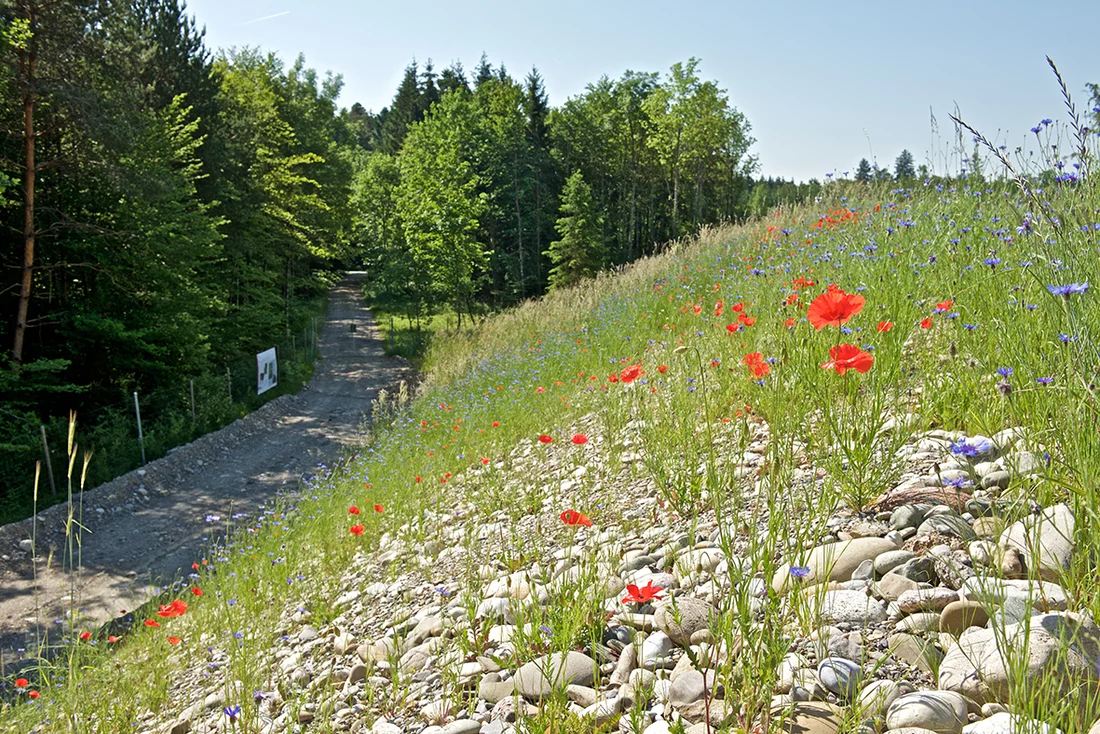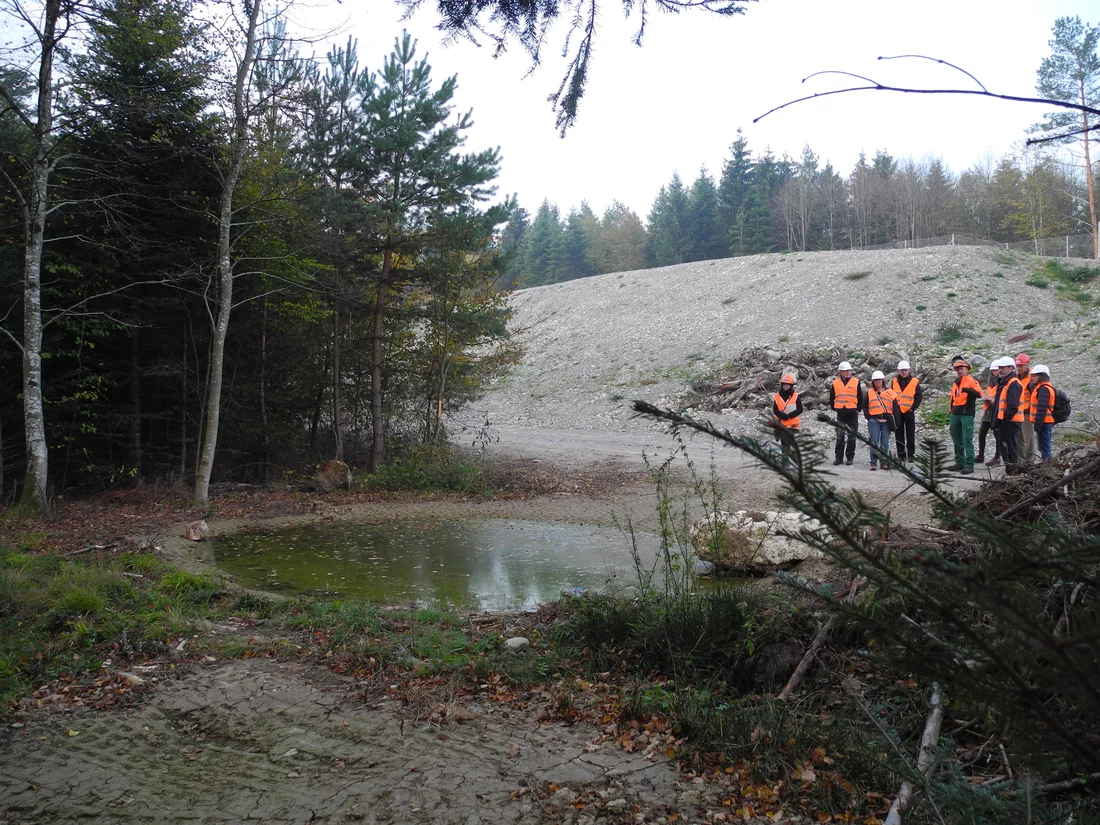With SwissFEL, a new landscape takes shape
Barely completed, the building housing the X-ray free-electron laser SwissFEL has disappeared again beneath a mound of earth. Since then, planting and landscaping have been under way on and around this major research facility of the Paul Scherrer Institute PSI. Its special location, in a forest, demands that SwissFEL be integrated in an environmentally appropriate way. So the facility is, from the outside, nearly invisible. And rare animals and plants have gained new living space.
Over the past three years, the Würenlingen forest near the Paul Scherrer Institute PSI has developed into an insider's tip for offbeat weekend outings. There has always been something new to see: first a five-hectare clearing in what had been dense woods, then an excavation pit. One could literally watch the building growing, 740 meters long and up to 50 meters wide – and no sooner was it there than it was covered up again. And suddenly flowers sprang up on the once-barren embankment, while below – almost imperceptibly from the outside – a top-notch research site was built up that would be, when ready for service, one of just a handful of comparable facilities worldwide: the X-ray free-electron laser SwissFEL.
As unusual as it may seem, at first glance, to situate a major research facility in a forest, a second look shows it's the logical choice: Facilities like the SwissFEL are extremely sensitive with respect to vibrations and shocks,
explains Peter Allenspach, a member of the PSI management board. Just a heavily traveled street in the vicinity is enough to disturb the experiments. However, it's not so simple to plant a concrete block several hundred meters long in a forest. Our highest-priority goal was to find a solution by which the facility could be 'embedded' in the forest in an environmentally appropriate way,
Allenspach emphasizes. Here environmentally appropriate
means minimizing disturbances of every sort, while also creating a landscape that ecologically compensates for the clearance of around five hectares of woods for the SwissFEL.
The solution is right there to see on the grounds of SwissFEL: You can watch it grow. Directly after its completion, the shell of the building was covered over with gravel and soil from the excavation. On this nutrient-poor substrate, a meadow was established. This kind of rough grassland, which is increasingly scarce in Switzerland, is especially valuable ecologically,
explains Gerold Janzi, SwissFEL sub-project leader for construction and infrastructure. Like Peter Allenspach, Gerold Janzi is a member of the interdisciplinary work group Forest
, which is responsible for planning and carrying out the embedding
of SwissFEL into its surroundings. The work group consists of environmental planners and representatives of the community of Würenlingen and the canton of Aargau as well as the Paul Scherrer Institute.
Habitat for rare species
On and around the SwissFEL, new living space is being created for rare animals and plants. Dotted with sand lenses as potential nesting places and directly abutting the forest's edge, the rough grassland, with its diverse vegetation, should now attract rare wild bees and grasshoppers. Endangered butterflies, too, are expected to find their way to the SwissFEL: Specific host plants that are important to them, such as sallow, are being established.
In all, around 30 different types of trees and shrubs are being planted. The bushier ones among them offer protection to wild animals traversing the site. Janzi underscores this: We deliberately took care to enable native wild animals to pass through SwissFEL at several places without being disturbed.
The planners paid special attention to amphibians that are highly endangered worldwide as well as in Switzerland. For them, several spawning pools have been provided, including piles of stones for hiding and sunning. So that the animals can also reach other places in the region where amphibians thrive, the better to mix and mingle, additional pools have been furnished as way stations.
The foundation stones for embedding the SwissFEL in its surroundings have been laid. Through interplay with nature, the new landscape is now developing. So far, everything is going according to plan: Nature is proving to be an especially cooperative partner,
laughs Janzi.
Text: Paul Scherrer Institute/Martina Gröschl


